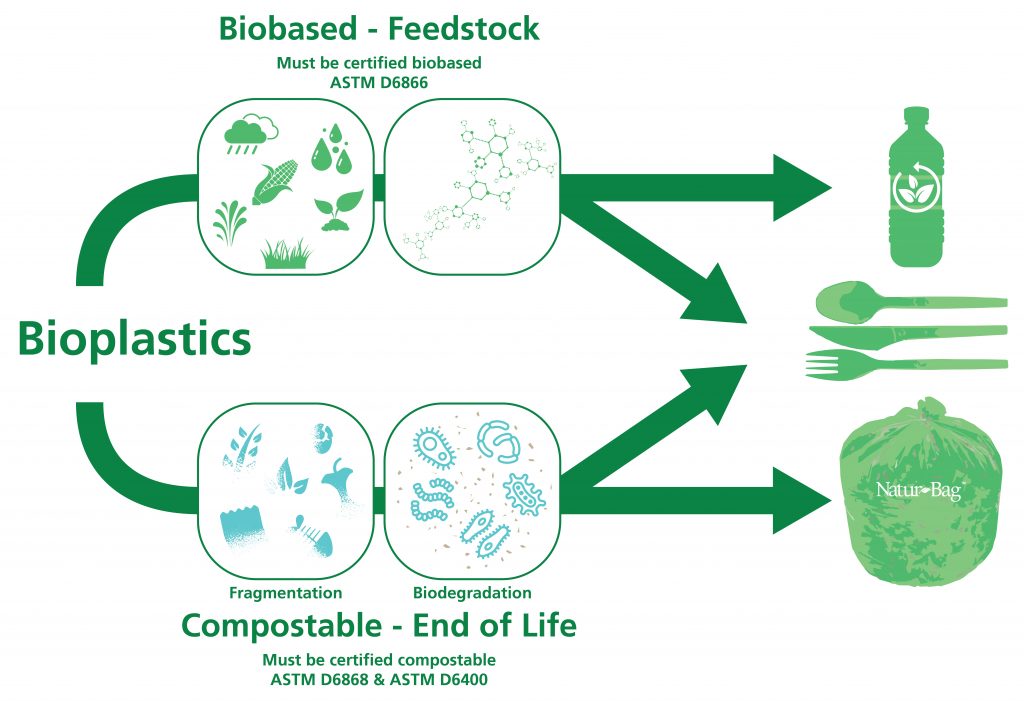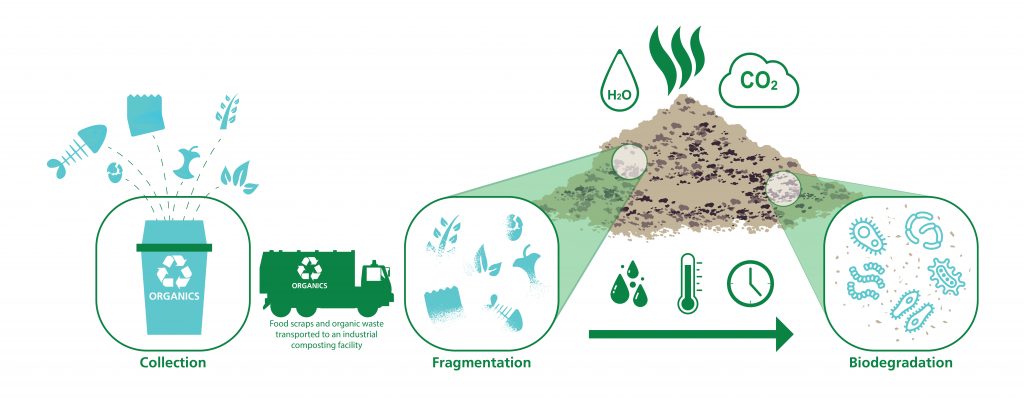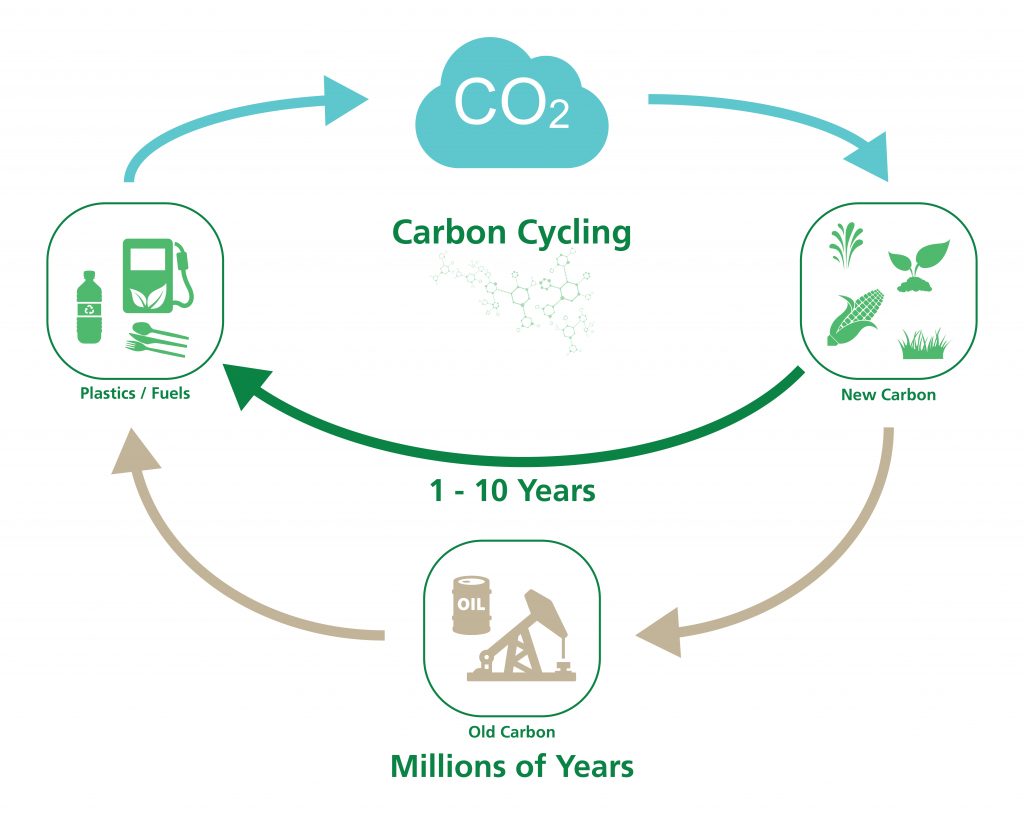Bioplastics 101
Learn more about bioplastics with information straight from the experts.
Bioplastics 101 introduces the different value propositions of bioplastics, details compostability, explores the impact of bioplastics on carbon footprint, and explains relevant global standards!
We know bioplastics, sustainability, and zero-waste are challenging topics. Continue scrolling to learn more!
Bioplastics provide two distinct value propositions: biobased and compostable.
Biobased – materials made from sustainable, renewable feedstock such as corn, soy, etc.
Must be certified per ASTM D6866
Compostability – organic materials that microbially assimilate into water, carbon dioxide, and/or biomass in an industrial compost facility within 180 days.
Must be certified per ASTM D6868 and ASTM D6400
How do Natur-Tec® products fit in?
Natur-Bag® liners are certified compostable
Natur-Ware® cutlery is certified biobased and certified compostable
Look for the BPI (Biodegradable Products Institute) certification logo on products to ensure they are truly compostable.


Composting is a two-step process including fragmentation and biodegradation. Composting is the biological process of breaking up organic matter such as food, manure, leaves, grass trimmings, paper, coffee grounds, bioplastics, etc., resulting in biomass (nutrient-rich soil amendments).
Fragmentation is the first step in this process when we notice material turning into smaller pieces.
Secondly, biodegradation takes place and that is when oxygen-breathing microbes (micro-organisms) consume the organic matter as food and convert it into biomass, water, and carbon dioxide (CO2).
The label “compostable” gives structure to the definition of biodegradability – specifying the time frame (180 days) and environment (industrial compost facility).
Biodegradability – Complete assimilation of fragmented materials through the life processes of soil micro-organisms.
Compostability – Complete assimilation within 180 days in an industrial compost environment.
Converting atmospheric carbon into petroleum through biomass takes millions of years, whereas releasing the carbon from the petroleum back into the environment takes only 1-10 years. The imbalance between the rates of carbon fixation and carbon release makes the use of petroleum to produce fuels and plastics completely unsustainable from an environmental perspective.
Carbon fixation is the process of converting inorganic carbon (C02) to organic compounds by living organisms. Carbon fixation naturally occurs via photosynthesis and chemosynthesis.
The bioplastic industry focuses on converting organic compounds (derived from the carbon within plants) into biofuels and bioplastics.
Unlike petroleum-based plastics, bioplastics are inherently sustainable. Bioplastics seamlessly integrate into nature’s carbon cycle balancing the rate of carbon release with the rate of carbon fixation.
